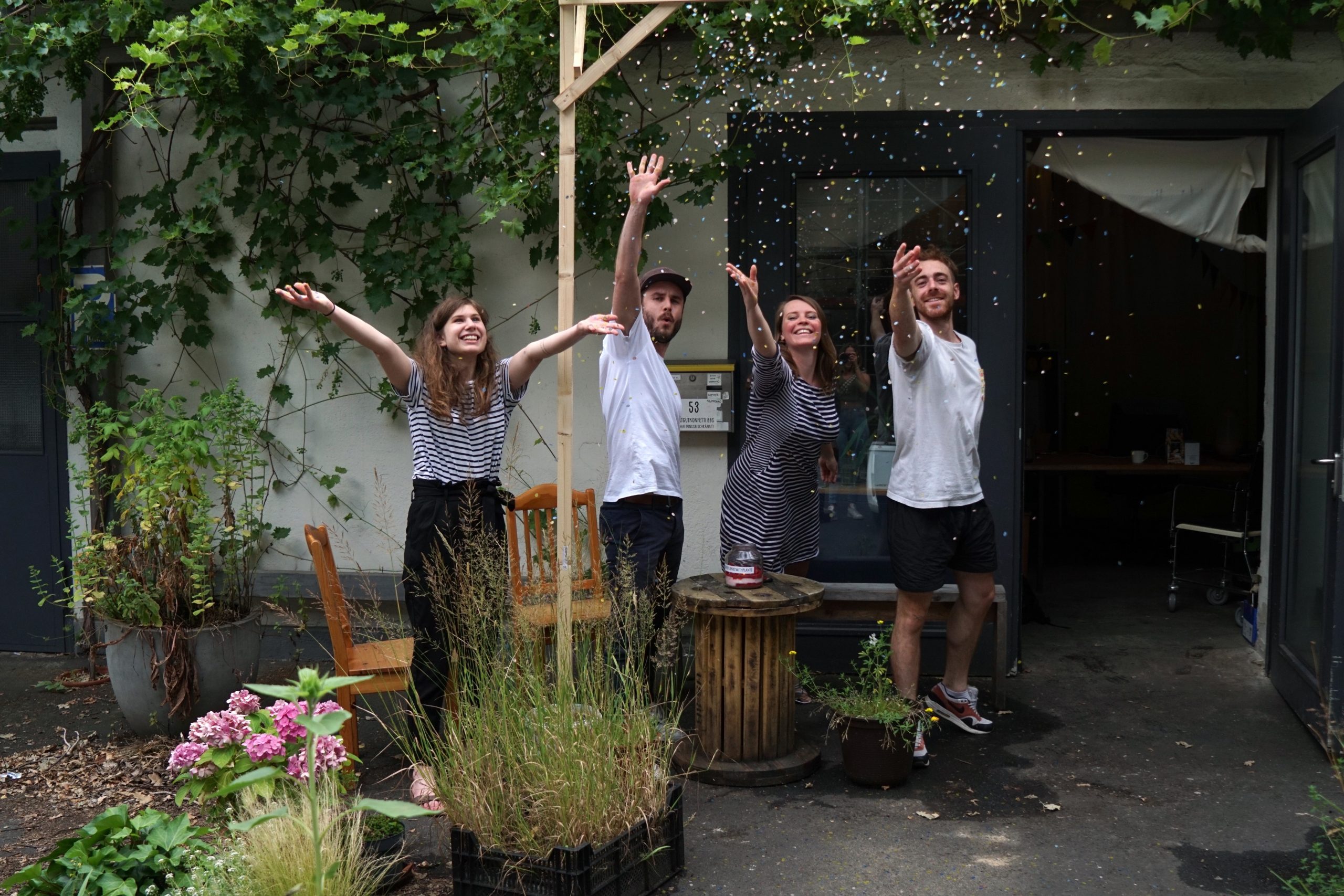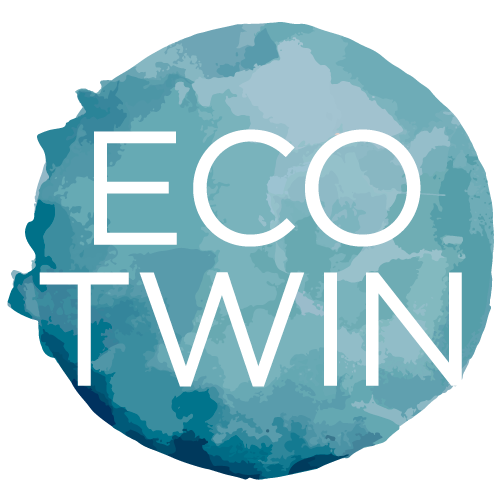
Confetti with good climate impact
Buying things without a purpose, simply for the pleasure of consumption, and environmental protection do not go together. This is true for most items. It is a trait of the throwaway society. But there is an exception, and even for a genuine throwable product: Confetti. Philip Weyer has reinvented confetti and simply called it seed confetti. The name already tells us what is different here. Seed confetti has two lives: The first as confetti and the second as a plant. In the interview, Philip tells us how a beautiful lifestyle product for residual waste becomes an equally beautiful but compostable lifestyle product with a new life as a flower.
Confetti for everyone!
Confetti is completely underestimated. Even beyond the inseparable K terms of carnival and confetti, at festivals and parties, in companies, at birthdays, weddings, award ceremonies – if there is something to celebrate, confetti is involved. The perfect symbol for easiness, not having to think seriously. But exactly this is the problem for ecologicaly-minded people. The knock-out factor for using confetti is the mountains of rubbish after the fun. Tonnes of waste are swept up and, because recycling is not possible, disposed of as residual waste. Since the paper snippets are also being replaced by cheaper plastic snippets, the environmental sin is growing. Seed confetti breaks this rule. The product-turned-philosophy transforms the problem into beauty and goes one step further.
Philip, what exactly is seed confetti?
The seed confetti contains seeds of up to 24 native plant species. There are well-known plants such as cowslip, fragrant violet or field thyme and many grasses and herbs in total, but also sorrel, red bunch grass and toadflax. All are light-dependent germinators, as are most kitchen herbs, carrots, lettuce and tomatoes. The confetti lies on the ground with the seeds and is not brought in and covered with soil. The carrier material in the confetti is starch-based. In addition, there are natural colouring agents. The raw materials and additives are certified organic and vegan. We produce as a manufactory in a small production facility in Kassel. Shipping also takes place from there and that is also handmade.
What role do environmental protection and the circular economy play in seed confetti?
Everything that nature gives away or throws away, in other words, what is rubbish for one player is in turn used by another organism. Humans are the only living creatures that take themselves out of this equation and do things that cannot be 100 per cent recycled. But we all have the chance to do something good for the environment. Without it always being linked to bans.
The confetti is supposed to be a bit symbolic of the fact that we have a product that we can throw away. And in fact, it no longer serves people afterwards, but the target group is a different one when it is thrown away.
Seed confetti in the city leads to more native plants in our populated areas. And that means more food for insects, like bees, but also the other flying insects, whose population has declined massively. This has increasingly become a problem in recent years, that we no longer have enough bees, that we have such strong imbalances in the ecosystems. Native plants preserve biodiversity.
How did you come up with the idea for seed confetti?
The idea of combining confetti and seeds had been on my mind for a while. There were a few crucial themes that were on my mind from time to time and which then melted together into Saatgutkonfetti. I study product design in Kassel and on the way to university I sometimes threw flower seeds on the surfaces that no one walks over. They turned into beautiful flowers and were accepted by the people. The city cleaning service then regularly tore the flowers out. I found it arrogant of our society to say what is allowed to grow where and what is named uncontrolled growth. Simply because they were not considered beautiful by the human eye. And then I come from Cologne and have been influenced by carnival. I know what it looks like after a carnival celebration. The confetti cannon on the Rhine. It goes into the river, then into the sea. It’s hard to undo that. And so, one thing led to another.
We, as a society, are happy when we have leftover material that we can simply throw away and then it becomes something meaningful and useful.
I discussed the idea of combining confetti with seeds with Hannah Hartmann, a friend and fellow student. We then thought about it together: How can this work, how can we make confetti with or from seeds, what material do we need? We worked on it for three quarters of a year until we found a process and a way to produce it. And then as quick as a flash we were crowdfunding.
You were very successful with your crowdfunding, what happened next?
Our crowdfunding campaign on startnext ran for one month, from April to May 2019, and it exceeded everything we had imagined. The demand there and the reactions were very nice and that motivated us strongly to continue in any case. We immediately produced and sold the first packs. Some media picked up on that, there were smaller articles in newspapers, reports on the radio. I was then suddenly an entrepreneur and found a team, Katja and Chris. Since then, we have been working as a core team and now have almost 18 people – and even after nearly two years, we still have no investors.

How do you get the seeds and confetti to stick together?
In total there are 24 different seeds of different sizes. Some are tiny, others a little bigger. It was important that the process is gentle on the seeds, that they are not damaged. The confetti carrier substance is the starch base, plus natural colours. And then we combine that.
What role does procurement play, where do the raw materials come from?
It is important for us to consider all the steps in the circular economy and to get good raw materials. We did a lot of research: what seeds make sense to put in the confetti. We work with a regional seed producer who produces our seeds, and we ordered a mixture there that fits our needs. That they are light-depended germinators, that they do not exceed a certain size, that they also work in the confetti. Since then, the mixture has been developing steadily. We are in constant exchange and discuss which seeds would be best for a new production or one of our editions. The other raw materials such as starch, natural colours and additives that are used in our editions, for example, come from organically certified farms. The packaging of the seed confetti itself is compostable and recyclable. And the outer packaging is made of recycled cardboard or grass paper.
What’s next from Seed Confetti?
We have a card game out, a 32-sheet card game. We present one plant or insect per card. Some of these are plants that are also in the confetti. With a drawing of the plant with roots and different inflorescences so that you can recognise it, and with a few fun facts about it. This is a playful way to build up know-how and knowledge about our native plant diversity. We also have seasonal special editions of seed confetti. In autumn, for example, it was foliage confetti, in winter snow confetti or now happiness confetti in the shape of clover.
You’ve been doing seed confetti for almost two years now: do you already have a new idea of what you want to change and tackle?
First of all, I will spend most of my time with Confetti. We still have a lot of ideas and I would like to achieve a lot there. And apart from that, I’m still a product designer and I still have the need to develop different kinds of products. I already do a bit of fashion and also design other sustainable products, all different.
I don’t want sustainability to be the only selling point. The product should appeal to you in another way.
All the facets and sustainable aspects of products and generally, of doing business, should go without saying.
What has always bothered me is that a lot of responsibility is passed on to the customers by companies. The market regulates it, the customer decides, but that’s a bit too mundane for me. As a product designer and entrepreneur, I have the motivation, attitude and purpose to design things sustainably and in accordance with circular economy and to bring them to the market.
Philip, thank you very much for your trust and the nice conversation.
Seed confetti is available in the Eco Twin Shop.
Or take the direct way to Saatgutkonfetti




